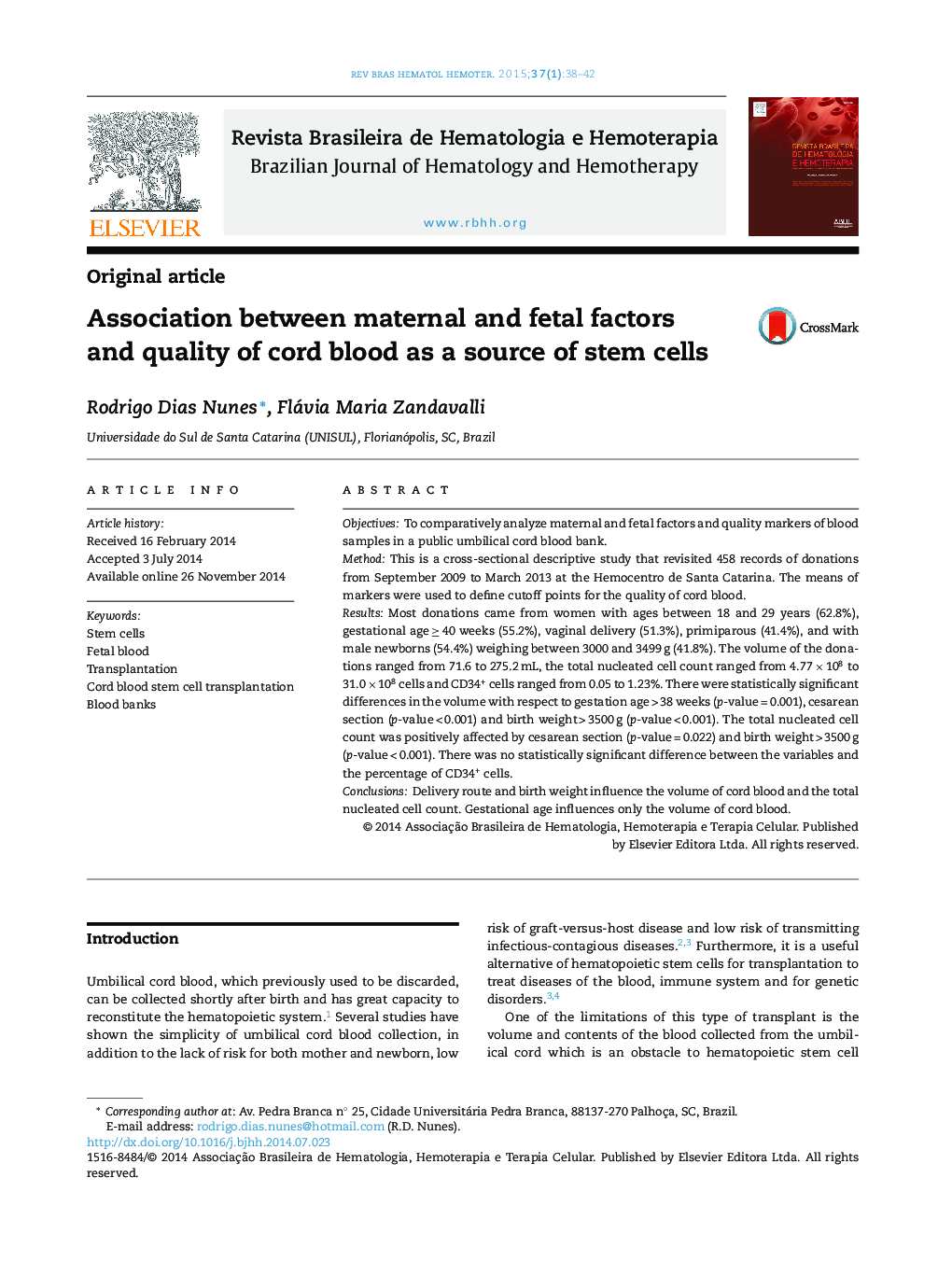| Article ID | Journal | Published Year | Pages | File Type |
|---|---|---|---|---|
| 3333049 | Revista Brasileira de Hematologia e Hemoterapia | 2015 | 5 Pages |
ObjectivesTo comparatively analyze maternal and fetal factors and quality markers of blood samples in a public umbilical cord blood bank.MethodThis is a cross-sectional descriptive study that revisited 458 records of donations from September 2009 to March 2013 at the Hemocentro de Santa Catarina. The means of markers were used to define cutoff points for the quality of cord blood.ResultsMost donations came from women with ages between 18 and 29 years (62.8%), gestational age ≥ 40 weeks (55.2%), vaginal delivery (51.3%), primiparous (41.4%), and with male newborns (54.4%) weighing between 3000 and 3499 g (41.8%). The volume of the donations ranged from 71.6 to 275.2 mL, the total nucleated cell count ranged from 4.77 × 108 to 31.0 × 108 cells and CD34+ cells ranged from 0.05 to 1.23%. There were statistically significant differences in the volume with respect to gestation age > 38 weeks (p-value = 0.001), cesarean section (p-value < 0.001) and birth weight > 3500 g (p-value < 0.001). The total nucleated cell count was positively affected by cesarean section (p-value = 0.022) and birth weight > 3500 g (p-value < 0.001). There was no statistically significant difference between the variables and the percentage of CD34+ cells.ConclusionsDelivery route and birth weight influence the volume of cord blood and the total nucleated cell count. Gestational age influences only the volume of cord blood.
